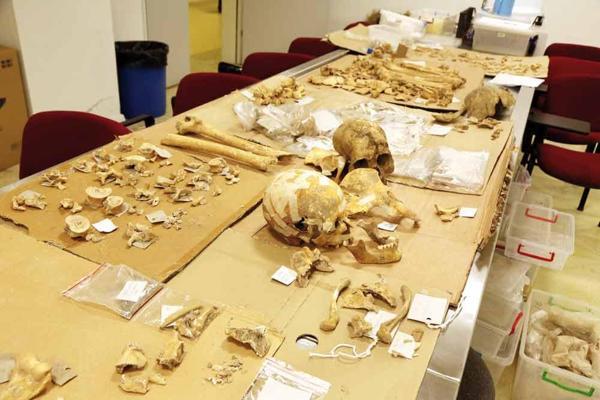Lab studies Conducted to determine ancient relatives
ÖMER ERBİL - ISTANBUL


Gene codes of skeletons unearthed in Istanbul’s Yenikapı, Pendik, Sirkeci and Beşiktaş neighborhoods during archaeological excavations are being solved by a team headed by Associate Professor Yasemin Yılmaz of Düzce University Archaeology Department.
Excavations in these neighborhoods have provided very important historical data. The next step is to find the genetic codes of the first settlers in Istanbul.
Yılmaz has worked with archaeologists in all excavation fields in Istanbul. As an archeologist and anthropologist, she has knowledge on how to remove skeletons in the right way.
“In terms of burial methods, it is possible to form a relationship between Beşiktaş and Yenikapı but we have not found traces of cremation in the Neolithic era excavations of Pendik on the Anatolian side. We look at Istanbul as a whole but we will separate the Asian and European side from one another. There is a 5,000-year difference between Yenikapı and Beşiktaş but the cremation method and normal burial methods have both continued,” she said.
Yılmaz, who joined a doctorate program jointly organized by Istanbul University and French Bordeaux University while voluntarily working on Yenikapı skeletons at the same time, has also worked on the removal of Neolithic age graves that have been unearthed during road construction on the Marmaray-Pendik-Gebze route.
As the result of carbon 14 tests that have been performed on the Yenikapı skeletons, the history of Istanbul is shown to date back to 8,500 years ago, which is further back than was previously thought, said Yılmaz, adding that the same method would be applied for excavations in Beşiktaş.
“We have not carried the skeletons in Beşiktaş to the lab at the university. This is work for the long-term. We have found many cremated remains in Beşiktaş but few normal burials. We cannot take ancient DNA tests on the cremated remains. When we work on the skeletons found in other parts of Istanbul, we will be able to determine the movement of their genes in Istanbul. If ancient DNA tests can be done on the migration route from Central Asia to Anatolia and we can obtain data, we can create a hypothesis about their ethnic origin. We have human bones enough to follow Istanbul’s cultural chronology,” she said.
“Are the Neolithic settlements in Yenikapı, Beşiktaş and Pendik related to one another? We need to take ancient DNA tests to find out. We had not been able to perform this work in Turkey in the past. We had sent the samples abroad and waited years and months for the results. Now, ancient DNA tests are done at the Middle East Technical University (METU) Biology Department and the carbon 14 test, which provides the exact date, is done at the Scientific and Technological Research Council of Turkey [TÜBİTAK],” said the professor.
Yılmaz said it is possible to determine the age of death with the data they have.
“It is possible to find out diet, gender in adults and the diseases that have left a mark on their bones. With isotopic analysis, we can find out their movement. It is possible to find out whether Pendik’s Neolithic group encountered Yenikapı’s Neolithic group, for instance. I only conduct anthropological studies. Genetic studies are a different discipline. Let’s say a researcher is working on a disease. He can come to the lab in our university and study it there,” she said.
The laboratory established at the Düzce University Faculty of Science and Letters Archaeology Department is the one and only in the Marmara region. Therefore, skeletons unearthed from ancient graves in Istanbul are gathered here. The university has a great contribution to the laboratory, which is made up of four big units, said Yılmaz.
